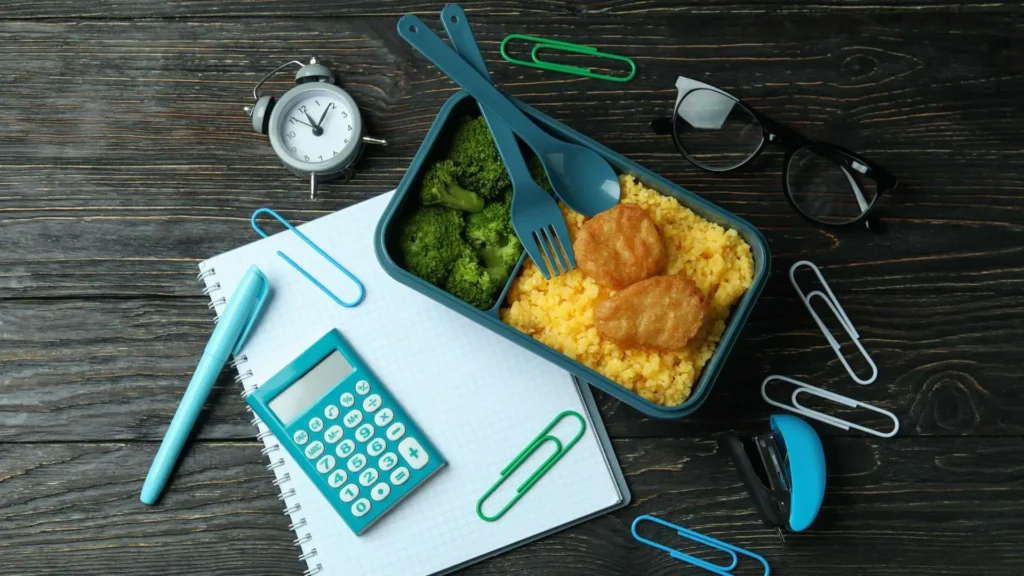Ever grabbed a giant pack of snacks or a huge bottle of shampoo, thinking you were saving money, only to realize later you didn’t need that much? It happens to many students trying to stretch their budgets.
Bulk buying looks smart on the surface, but checking the real cost per item, it can lead to wasted money and cluttered rooms. That’s where PriceGPT comes in. This smart tool helps you compare prices easily and shows you the real cost of buying in bulk versus smaller packs.
PriceGPT in the Blitz app takes the guesswork out of shopping, especially when you have limited space and a tight budget. If you want to shop smarter, save money, and avoid buying more than you need, this guide will show you how to compare bulk buying prices using PriceGPT.
Ready to shop smarter and keep more in your account? Let’s dive in.
Why Bulk Buying Seems Smart—But Isn’t Always?
At first glance, buying large packages seems like a smart way to save money. Retailers often promote “big savings” for buying in bulk. However, there are situations where bigger is not cheaper. Students, in particular, can face problems when bulk buying leads to overpayment, waste, or clutter.
Here are some reasons bulk buying cannot be a good choice for students:
- The myth of bigger is cheaper
Sometimes, larger packages cost less per unit, but other times they do not. Without careful comparison, students may pay more by choosing bulk packs that are not good deals. Here’s more about How to Use PriceGPT to Track Price Drop and Get Notified Instantly.
- Overpaying for bulk items
Buying a large quantity without comparing unit prices can mean spending more than necessary.
- Waste and expiry
Perishable goods can go bad before they are used up, leading to waste.
- Overconsumption
Having too much of something can lead to using it faster than needed, simply because it is there.
Read: PriceGPT vs Google Shopping: Which Finds
Introducing PriceGPT’s Bulk Comparison Feature
PriceGPT is an AI-powered shopping assistant that helps students shop smarter. It has a special bulk comparison feature designed to make checking prices simple and clear. Here are some features of PriceGPT:
Breaks Down Cost Per Unit
PriceGPT calculates the price of each item, ounce, or roll in different packages so you can see what really costs less.
Instant Price Insights from Multiple Retailers
It gathers pricing data from various stores and online shops, showing you the best options all in one place.
Smart Shopping Aid for Students
For students who have limited budgets or storage space, PriceGPT guides you toward purchases that save money and avoid waste.
This tool removes guesswork and makes bulk shopping easier to understand.
How PriceGPT Helps You Compare Bulk vs. Single-Item Pricing
When you aren’t sure if you should buy in bulk or just one thing at a time, it can be hard to see which saves more money. PriceGPT breaks down costs and shows you clear comparisons. This makes it easier for students to shop smartly without guessing. Read about Behind the Scenes: How PriceGPT Finds the Cheapest Hidden Deals for Students.
Here’s how PriceGPT guides you through comparing bulk and single-item prices step by step:
Step 1: Scan or Search for Items
Start by entering the product you want to compare into PriceGPT. You can search for stuff like “toilet paper,” “protein bars,” or “mac and cheese.” Then, add the sizes you want to check. For instance:
- “Show me 6-pack vs. 24-pack toilet paper.”
- “Compare single protein bars with a 12-pack.”
- “Check mac and cheese in 3-pack and 10-pack sizes.”
This gives PriceGPT the information it needs to start calculating the differences.
Step 2: See Cost Per Unit Side by Side
PriceGPT automatically calculates the price per roll, ounce, or individual item. It shows you this cost, not just the total price.
This way, you can see which is a better deal without doing the math. Charts or lists help you see the unit cost for both bulk and single quickly.
Step 3: Factor in Shelf Life and Usage Frequency
PriceGPT also looks at how fast you will use the product and if it keeps well. This stops you from buying more than you need. For example:
- Snacks: best used within 4 weeks.
- Rice: able to store for 12 months.
Knowing how quickly you’ll use something helps you save money and reduce waste.
Check this out: Can AI Really Find Better Prices? Putting PriceGPT to the Test
Step 4: Include Loyalty Discounts, Coupons, or Membership Deals
PriceGPT includes these discounts in the pricing calculations if you have:
- A membership at stores like Costco or Sam’s Club.
- Loyalty Discounts
- Random Coupons
This gives you a more accurate picture of the actual cost after discounts.
Step 5: Make the Smart Buy
After considering price, storage, usage, and discounts, PriceGPT gives a clear recommendation on which product is worth buying. It comes with consideration of both the cost and practicality, so you don’t purchase something that will become waste or waste a lot of space.
Real-Life Examples: Bulk Buying Done Right (or Wrong)
Buying in bulk can save money, but only if done right. Sometimes, larger packs aren’t worth it. This is especially true for students with limited space or tight budgets. Here are some examples of when bulk buying is smart and when it can waste money. Discover about PriceGPT for Group Buys — Save More with Friends.
Case 1: Cereal in Bulk vs. Small Boxes with Coupons
A student sees four big cereal boxes for $12.50. That seems cheaper than $3.50 for one box. However, PriceGPT shows that each box in the bulk pack costs $3.12. So, the savings aren’t that much.
Then, the student finds a $1-off coupon for one box at another shop. This makes it $2.50 per box, a better deal. Here, small packs with coupons are a smarter choice than large lots.
Case 2: Bulk Shampoo vs. Single Bottle with Discount
A big store sells two big shampoo bottles for $15, which is $7.50 each. A nearby shop offers one for $10, but with 30% off.
After the deal, it’s $7 each, cheaper than the lot price. This shows that sales and deals can often beat large lot buys.
Case 3: Dorm Snacks—When Group Buying Makes Sense
Three roommates pick a big 48-pack of snack bars for $36, about $0.75 each. Buying four 12-packs for $12 each would be $1 per bar.
Sharing the large lot, each pays $12 for 16 bars. They save money and don’t keep more than they can eat. Here, buying in bulk works well because the unit price is lower, and they eat the snacks fast.
Benefits of Bulk Price Comparison for Students
Bulk buying can save students money, but only if they check prices carefully. Understanding the actual cost per item enables you to make informed decisions. Here are some key benefits of comparing bulk prices:
Shared Costs
Bulk buying lets you share costs with friends. This cuts what each person pays while still getting enough for all, especially shared stuff like snacks or cleaning supplies.
Avoid Overbuying
Price comparison helps students avoid buying too many items they rarely use, like 100 pens or extra kitchen tools, preventing wasted money and storage space.
Better Value
Looking at the cost per unit helps spot real savings. Students can choose products that give more for their money instead of being swayed by bigger packages that might not be cheaper.
Storage Planning
Comparing prices helps to plan storage before buying. This avoids a mess in small dorm rooms while using discounts well.
Bulk Buying Mistakes to Avoid—Even with Good Prices
Buying in bulk can cut costs, yet only if you watch out. At times, a deal that seems good can end up as lost money or lost space. Students need to steer clear of usual errors to make sure this way of buying pays off. Knowing these traps lets you shop more wisely and keep your money safe.
Here are some usual mistakes to watch out for when buying in bulk:
1. Overbuying Unused Items
Buying large quantities of products you rarely use just because they are cheap can fill your space with unnecessary items. It’s better to buy only what you will really use.
2. Misleading Bulk Packs
Some stores sell “bulk-like” packs that seem large but actually have a higher price per unit. These are not real savings and can trick shoppers into spending more.
3. Neglecting Quality
Choosing bulk products only based on price may result in poor-quality items. It is important to balance price and quality for the best value.
Interesting read: How to Scan and Track Price Trends for Your Favorite Brands?
How PriceGPT Beats Manual Comparison
Price comparison by manually takes time and can be frustrating. This is true for single items and bulk packs. Here’s how PriceGPT outshines manual comparison:
| Feature | PriceGPT | Manual Comparison |
| Shows real-time prices | Yes | No |
| Updates prices dynamically | Yes | No |
| Calculates price per unit | Yes | Requires manual math |
| Compares bulk vs. single item | Yes | Time-consuming |
| Works on mobile devices | Yes | Limited to paper/calculator |
| Suggests best buy instantly | Yes | No |
With PriceGPT, students can make quick, correct buying choices without the stress of old ways. It turns shopping into an easy, well-informed act, saving time and money.
Pairing PriceGPT with BudgetGPT and DealsGPT
Using PriceGPT with BudgetGPT and DealsGPT makes a complete shopping set for students. Each tool has a part, and together they help save cash, track spending, and get the most from every buy.
- BudgetGPT lets you set and watch spending caps. Link it with PriceGPT to see how buying a lot helps you stay within budget.
- DealsGPT finds deals, codes, and bonus points for your purchases. PriceGPT makes sure you choose the lowest cost per unit and grab more savings.
By using these tools, you can shop smoothly with AI support.
FAQs About How to Compare Bulk Buying Prices Using PriceGPT
Does PriceGPT work with warehouse clubs like Costco?
Yes, PriceGPT includes prices from big clubs like Costco and Sam’s Club. It lets you check their bulk prices with regular stores to find out which one saves more.
Can I compare store-brand vs. name-brand bulk items?
Absolutely! PriceGPT lets you compare both types. This will allow you to determine if it is worth paying more for a brand or if the store brand will suffice at a lower price.
Does it account for deals like “Buy 2, Get 1 Free”?
Yes, PriceGPT counts those deals by changing the cost per unit. This allows you to see what the true cost is and whether you want to take advantage of the offer.
What about perishables or items with expiration dates?
PriceGPT looks at shelf life when comparing items. It points out perishables and warns you if buying a lot might lead to waste, helping you skip buying too much of things that spoil fast.
Can I compare bulk buying across different stores?
Sure! PriceGPT fetches live prices from many shops, allowing you to compare bulk prices everywhere. This makes it simple to locate discounts.
Final Thoughts: Bulk Savings That Actually Work
Comparing bulk prices can be simple and fast. With PriceGPT, you get clear comparisons that guide your shopping and help you save. It shows you the real cost per piece, counts in savings, and even checks how much you’ll use.
Whether you’re shopping alone or with roommates, PriceGPT makes sure your money goes further and prevents waste. It takes the guesswork out of bulk buying and puts control back in your hands.
Download the Blitz app and start using PriceGPT today and turn bulk buying into smart buying. Your wallet and future you will be happy. Ready to save smarter? Give PriceGPT a try now.





